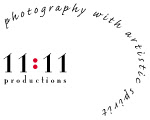Bokeh
In photography, bokeh is the blur,or the aesthetic quality of the blur, in out-of-focus areas of an image. Sometimes bokeh is misleadingly defined as "the way the lens renders out-of-focus points of light." since it is the characteristic of the image, not the lens itself. However, differences in lens aberrations and aperture shape cause some lens designs to blur the image in a way that is pleasing to the eye. Bokeh occurs for parts of the scene that lie outside the depth of field.
-Wikipedia
In these photos, I deliberately play with depth of field and light to render this effect.
Bokeh is often most visible around small background highlights, such as specular reflections and light sources, which is why it is often associated with such areas.[3] However, bokeh is not limited to highlights; blur occurs in all out-of-focus regions of the image.
The term comes from the Japanese word boke (暈け or ボケ), which means "blur" or "haze", or boke-aji (ボケ味), the "blur quality". The Japanese term boke is also used in the sense of a mental haze or senility.[9] The term bokashi (暈かし) is related, meaning intentional blurring or gradation.
The English spelling bokeh was popularized in 1997 in Photo Techniques magazine, when Mike Johnston, the editor at the time, commissioned three papers on the topic for the March/April 1997 issue; he altered the spelling to suggest the correct pronunciation to English speakers, saying "it is properly pronounced with bo as in bone and ke as in Kenneth, with equal stress on either syllable" -Wikipedia
-Wikipedia
In these photos, I deliberately play with depth of field and light to render this effect.
Bokeh is often most visible around small background highlights, such as specular reflections and light sources, which is why it is often associated with such areas.[3] However, bokeh is not limited to highlights; blur occurs in all out-of-focus regions of the image.
The term comes from the Japanese word boke (暈け or ボケ), which means "blur" or "haze", or boke-aji (ボケ味), the "blur quality". The Japanese term boke is also used in the sense of a mental haze or senility.[9] The term bokashi (暈かし) is related, meaning intentional blurring or gradation.
The English spelling bokeh was popularized in 1997 in Photo Techniques magazine, when Mike Johnston, the editor at the time, commissioned three papers on the topic for the March/April 1997 issue; he altered the spelling to suggest the correct pronunciation to English speakers, saying "it is properly pronounced with bo as in bone and ke as in Kenneth, with equal stress on either syllable" -Wikipedia
Labels: Bokeh, photo techniques






0 Comments:
Post a Comment
Subscribe to Post Comments [Atom]
<< Home